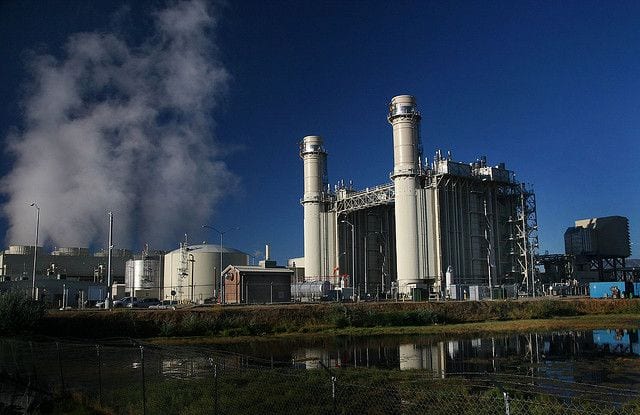
The Environmental Protection Agency’s (EPA) carbon emissions regulations for existing power plants, released earlier this month, are an opportunity for utility customers to save big with renewable energy—accelerating the current trend. Studies by the New York Independent System Operator (NY ISO), Synapse Energy Economics, and the National Renewable Energy Laboratory (NREL) suggest that increased renewable energy generation has the potential to save American ratepayers tens of billions of dollars a year over the current mix of electric power options. This does not mean this transition will be without costs—such as upgrading infrastructure and retiring existing power plants—but rather that the benefits to U.S. consumers potentially outweigh these costs.
Renewable Energy: Savings for All
The studies conducted by NY ISO, Synapse Economics, and NREL examine the costs and benefits of renewable energy generation to four major electricity systems in the United States—NY ISO serving New York state, Midcontinent ISO (MISO) serving much of the Midwest, PJM Interconnection (PJM) serving the mid-Atlantic region, and the Western Interconnection—together providing electricity for 60 percent of the U.S. population, or 190 million people. These studies cover both competitive electricity markets and traditional electric utilities that own and operate their own generation fleets.
The studies all show that renewable energy cuts costs system-wide by replacing power plants that are expensive to operate, mainly due to fossil fuel expenses. NY ISO showed that adding 8 GW of wind capacity in New York State by 2018 wouldsave $1.3 billion in power plant operation costs per year, roughly $65 per person served.
Studies of MISO and PJM showed similar savings in power plant operation, $12.2 billion per year by adding 40 GW of wind capacity in MISO by 2020 and $14.5 billion per year by delivering 22 percent of electricity in PJM with wind energy by 2026. Both of these studies note that an investment in electricity infrastructure is required to integrate large amounts of new renewable energy generation onto the MISO and PJM systems. However, lower wholesale power prices far outweigh the needed infrastructure investment and provide a net benefit of up to $9.4 billion a year in MISO—$241 per year per person—and $6.9 billion a year in PJM—or $113 per year per person.
In the Western Interconnection, a sprawling region covering the 14 states west of the Rocky Mountains, NREL showed a potential savings in power plant operations of nearly $7 billion a year—$83 per year per person—from delivering 33 percent of electricity generation with wind and solar energy sources on the system as it looked in 2011. NREL’s calculations also included the cost of conventional power plants fueled by coal and natural gas, compensating for the variability of wind and solar energy sources. This cost proved to be minimal: a maximum of 2 percent of the total savings in power plant operation.
None of these studies evaluated the cost of retiring one fleet of power plants and building a replacement fleet. They only pointed to the cost savings consumers would see from operating a more renewable fleet. In the NY ISO, MISO, and PJM studies, this was because ratepayers wouldn’t bear that cost and investors who bet on fossil fuels bear the financial impact of having a power plant that can no longer sell its power. By contrast, the NREL study covers several states that still have traditional power sectors. In these states, ratepayers do bear the cost of building those plants. This erodes some of the savings consumers see from the lower cost of renewable energy. This also means investors would have to take into account the cost of further capital investments in fossil fuel plants that may have to close because they pollute too much. The overall lower-cost option may well be to move to renewable energy earlier, limit stranded assets, and make the most of the operational savings.
Accelerating the Existing Trend
The lower cost of operating renewable energy facilities and the system-wide cost savings outlined above have already eroded coal’s role in new generation in the United States. In 2013, only 10 percent of new U.S. capacity was from coal. Investors and ratepayers are rightly skittish about betting on coal for new facilities. And in a recent report by Citigroup, the investment bank projected that by 2020, all new U.S. electricity generation will come from renewable energy sources.
The trend is clear: The United States is moving towards cleaner power generation, with renewable energy at the forefront. EPA’s new regulations will help accelerate this transition, continue the reduction in U.S. carbon emissions, and offer customers hundreds of dollars in savings annually compared to the cost of continuing to run the current power plant fleet.
Source: WRI. Reproduced with permission.











